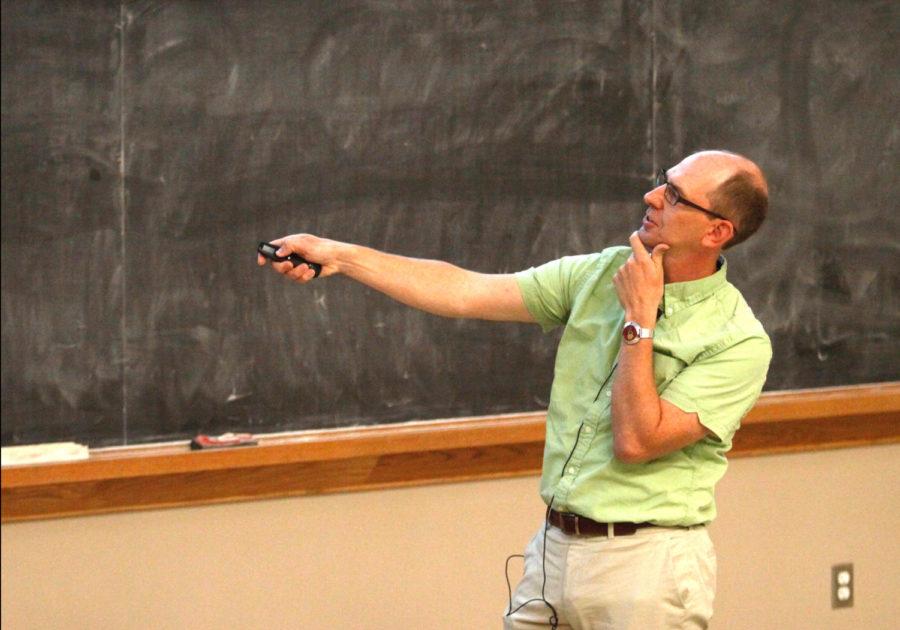Astronomy lecture addresses differences between planetary systems
Jonathan Fortney, an associate professor in the Department of Astronomy & Astrophysics at the University of California, Santa Cruz is giving talk about the NASA’s Kepler Mission, which has revealed that the most common size of planet in our galaxy may be those from 2-3 Earth radii in Physics Hall room 0003.
September 9, 2013
Scientists study other planetary systems to learn more about our own. To give students a better understanding of what this means, Jonathan Fortney, ISU alumnus and professor at the University of California, Santa Cruz, gave a lecture addressing the composition and atmospheric physics of planets outside our solar system.
“NASA launched a space telescope called Kepler,” Fortney said. “What Kepler is doing is finding planets around other stars, around thousands of stars. So what it’s showing us is that our solar system is not really a good representation of the diversity of planetary systems you can find around other stars.”
Mercury is the planet closest to the sun, which makes our planetary system unusual to others because the space in between the two usually contains other planets that could be bigger than Earth.
In other planetary systems, it is common to find planets that are two to three times the Earth’s radius.
“So what I do is I try to make computer models of the atmosphere and the interior of planets, which we then compare directly to the observations of those kinds of planets,” Fortney said. “We’re trying to figure out what these intermediate size planets are made of, and then figure out how they form, then maybe figure out why our planetary system doesn’t have any, even though they seem to be a very common kind of planet.”
Fortney and his team take readings of the atmosphere of Jupiter, which allows them to analyze molecules in Jupiter’s atmosphere.
“We actually know that [Jupiter is] more enriched in the heavier elements than the sun is,” Fortney said. “Saturn, a lower mass planet, is actually more enriched than the sun is. Uranus and Neptune, which are even lower mass, are even more enriched in these heavier elements.”
So even though these smaller planets have a similar atmosphere to the sun, made up of hydrogen and helium, something about their formation makes them enriched in heavier elements.
“And so, these other planetary systems, we can’t actually see the planets, but we can still take spectra of the planet’s atmosphere,” Fortney said. “We’re looking for molecules that absorb light in the planet’s atmosphere.”
By looking at the absorption features, Fortney and his team can try to figure out how much of a certain gas there is in a planet within a system.
“He presented the material in a very comprehensive manner,” said Aleksander Poniatowski, senior in mechanical engineering. “I thought at first the vocabulary words would go right over my head and I wouldn’t understand what’s going on, but I’d say about 90 percent of what he was talking about, I was able to understand.”
After Fortney attended Iowa State, he studied at the University of Arizona, where he received his doctorate. He now works as a professor.
About 60 students and faculty members attended Monday’s lecture in Physics Hall.







